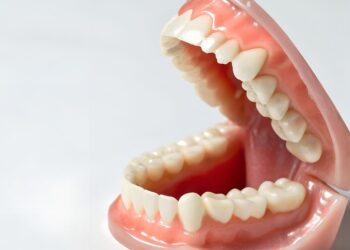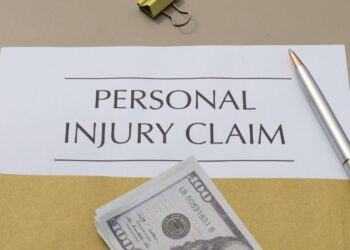When a crash happens on Maui, everything freezes for a moment—the screech of tires, the flash of metal, the stunned silence afterward. Drivers step out of their vehicles, shaken but relieved. If they can stand, walk, and speak, many assume they’re fine. But what looks like a minor accident on Kahului’s roads can hide injuries that don’t reveal themselves until hours, days, or even weeks later.
In the wake of a collision, adrenaline can mask pain, and some of the most dangerous injuries show no immediate signs. Ignoring them can lead to chronic pain, nerve damage, or long-term disability. That’s why it’s so important to get checked by a medical professional—and to understand your rights. If you’ve been in an accident, consulting an award-winning car accident injury lawyer can ensure you receive the care and compensation you need, even when the harm isn’t visible.
The Illusion of “I’m Okay”
Many Kahului drivers underestimate their injuries because they don’t feel them right away. After a crash, your body releases adrenaline and endorphins, powerful chemicals that dull pain and create a false sense of stability. You might leave the scene believing you’re unhurt, only to wake up the next morning with stiff muscles, throbbing headaches, or dizziness.
Unfortunately, waiting too long to see a doctor can complicate both your health and your insurance claim. Medical documentation connects your symptoms directly to the accident, and delays give insurers room to argue that your injuries came from something else.
Whiplash: The Most Misunderstood Injury
Whiplash has become a cliché in pop culture, but it’s one of the most common and misunderstood accident injuries. Even a low-speed rear-end collision can cause the neck to snap back and forth violently, stretching muscles and ligaments beyond their limits.
At first, the pain might feel like mild soreness. Over time, however, untreated whiplash can lead to headaches, restricted motion, or nerve compression. Some victims develop chronic neck pain that lasts for years. Prompt diagnosis through imaging tests and early physical therapy can make the difference between temporary discomfort and long-term damage.
Concussions Without a Blow to the Head
Not all head injuries come from direct impact. The sudden jolt of a collision can cause the brain to move inside the skull, leading to a concussion even if your head never hits anything. Symptoms may include confusion, light sensitivity, nausea, or difficulty concentrating—but they often take hours to appear.

This type of “invisible” trauma is especially dangerous because many victims don’t realize they’ve suffered a brain injury. Left untreated, concussions can cause cognitive problems, mood changes, and fatigue. Anyone who experiences fogginess, dizziness, or memory loss after a crash should seek medical evaluation immediately.
Internal Injuries: The Silent Threat
Seatbelts save lives, but the force of restraint can still cause bruising to internal organs. Blunt trauma from steering wheels, airbags, or seatbelts can result in internal bleeding that isn’t visible externally. Symptoms like abdominal pain, fainting, or deep bruising may not appear until it’s too late.
Emergency rooms in Maui frequently see patients who believe they had “just a few aches” after a crash, only to discover serious internal injuries days later. Regular monitoring and diagnostic tests—such as CT scans or ultrasounds—can detect internal bleeding before it becomes life-threatening.
Back and Spinal Injuries: Damage You Can’t See
The spine bears the brunt of the force in most collisions. Even when there’s no fracture, sudden compression or twisting can injure discs, joints, or nerves. Victims might feel fine at first, but soon experience tingling in their limbs, back stiffness, or shooting pain.
Herniated discs are particularly common after car crashes in Kahului. They can press on nerves, causing pain that radiates through the body. Without prompt care, these injuries can progress, leading to mobility issues or permanent nerve damage.
Emotional and Psychological Trauma
Not all scars are physical. Many accident victims in Maui report anxiety, nightmares, or panic when driving again. This emotional toll—often called post-traumatic stress disorder (PTSD)—can affect sleep, focus, and relationships.
Because emotional injuries don’t leave visible marks, insurance companies often downplay them. But they are real, diagnosable, and compensable under Hawaii law. Therapy and counseling play an essential role in recovery, and documenting psychological symptoms can strengthen your case for emotional damages.
How to Protect Yourself After a Crash
In the hours and days following an accident, your decisions can make a major difference in your health and your legal outcome. Here’s what every Kahului driver should do:
- Get medical attention immediately. Even if you feel fine, insist on a full examination.
- Document everything. Take photos of your injuries, vehicle damage, and accident scene.
- Keep a pain journal. Note any new or worsening symptoms, even if they seem small.
- Follow medical advice. Skipping appointments or ignoring treatment plans weakens your claim.
- Avoid quick settlements. Insurance companies may offer fast payouts that don’t reflect the true cost of hidden injuries.
Taking these steps protects not only your recovery but your financial stability in the months ahead.
The Role of Medical Experts in Hidden Injury Cases
Because invisible injuries are hard to prove, medical documentation becomes the backbone of any claim. Experienced attorneys often work with doctors, neurologists, and orthopedic specialists to establish a clear connection between the accident and your condition.
Diagnostic tools such as MRIs, CT scans, and EMGs can uncover internal damage that standard exams might miss. Having a medical expert testify about the likely cause of your injuries can strengthen your case significantly—especially when insurers try to argue that your pain isn’t accident-related.
Hawaii’s No-Fault Insurance and Delayed Symptoms
Hawaii’s no-fault insurance system covers your initial medical bills through Personal Injury Protection (PIP), regardless of who caused the accident. However, PIP has limits. If your injuries are severe enough—resulting in permanent impairment, disfigurement, or significant medical costs—you can pursue additional compensation from the at-fault driver.
Hidden injuries often cross that threshold because they require long-term treatment, physical therapy, or surgery. A local attorney familiar with Hawaii’s insurance laws can help determine whether your case qualifies to go beyond PIP and seek full recovery.
Healing What You Can’t See
Kahului’s roads are surrounded by beauty—the ocean on one side, Haleakalā on the other—but even here, accidents can change lives in ways that aren’t immediately visible. The pain that hides beneath the surface is often the most dangerous kind.
If you’ve been in a crash, don’t dismiss your symptoms or assume you’re fine just because you walked away. Hidden injuries have a way of growing louder over time. With timely medical care and legal guidance, you can uncover the truth about your condition, get the treatment you need, and reclaim your health—body and mind alike.
Because in the end, the bruises you don’t see are often the ones that matter most.














Discussion about this post